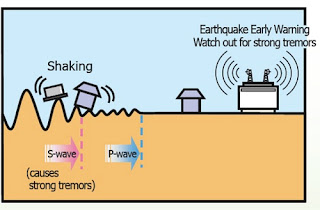| Online: | |
| Visits: | |
| Stories: |

| Story Views | |
| Now: | |
| Last Hour: | |
| Last 24 Hours: | |
| Total: | |
Nepal install earthquake early warning system for the first time
 |
| Image Courtesy: pnsn.org |
The Nepal Academy of Science and Technology (NAST) has installed an earthquake early warning system which can inform about the earthquake 10-22 seconds in advance.
According to the Vice Chancellor of NAST, Prof Dr Jeev Raj Pokharel, the technology has been brought for the first time to Nepal. “It will first be started by keeping 80 sensors with help of the Chinese government. We will need 320 sensors to cover the whole country and NAST will have to buy the remaining,” he added.
The earthquake sensors will send information to the central system during the time interval between the primary wave and secondary wave of the earthquake. The primary wave also gives information about the magnitude of the earthquake. Round the clock high speed internet and electricity will be needed for the system and NAST is holding discussions with telecom service-providers and Nepal Electricity Authority (NEA) for that.
Earthquake early-warning systems have been deployed in only a handful of the world's seismic hot zones, Reuters quoted seismologist Peggy Hellweg, of the Berkeley Seismological Laboratory at the University of California, Berkeley as saying. They can warn of quakes as much as a few minutes before they strike. Countries with such systems include Mexico, Japan, and the United States, where the most advanced system is California's state-run ShakeAlert.
Nepal earthquake has also shifted Mount Everest, the world's highest peak, by three centimeters (1.2 inches) to the southwest, Chinese authorities said.
Recommended post: How smartphone helps in earthquake early warning system
Source: http://www.disaster-report.com/2015/06/nepal-earthquake-early-warning-system.html



